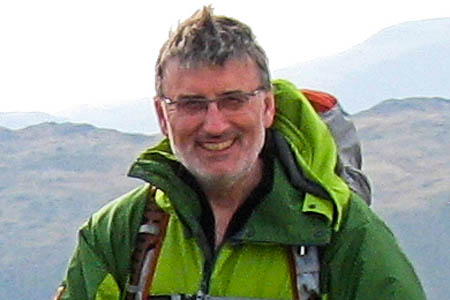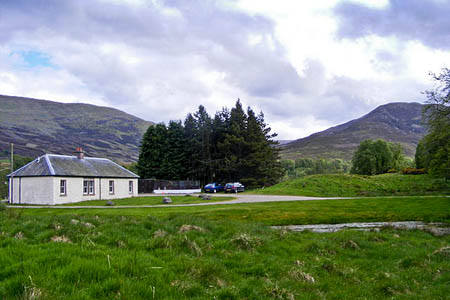A group of walkers plans to carry a coffin to the site of a proposed windfarm to mark the death of the Scottish wilderness.
Walker and blogger Alan Sloman will be joined by friends in a wake on the hillside at Dunmaglass in the Monadhliath Mountains next week to mark what he says is the destruction of wild land.
Mr Sloman said: “The Highlands of Scotland are well on the way to industrialisation on a vast scale.
“Wind power stations are horribly inefficient, produce electricity at very high prices and are only in existence because of the massive subsidies paid by the consumer. The National Grid cannot cope with the fluctuations in the power delivered by wind at present and so with three times as many turbines planned than we have installed already, Scotland stands every chance of having major power blackouts.
“However, once you have signed up to having energy supplied by wind power it’s pretty obvious that the best sites for the turbines are where it is windiest, which is on top of the hills.
“These wind power stations will blight the Scottish landscape for ever, with hundreds of miles of access tracks, whole chains of pylons and cables and millions of tons of concrete buried in the landscape, not to mention the thousands of 400- to 500-feet high whirling turbine blades.
“The damage these turbine blades will do to Scottish birdlife is unforgiveable in itself.”
The wake for the wild will take place on Tuesday, 17 May. Mr Sloman said: “The Dunmaglass estate is right next door to Coignafearn, where the enlightened owner, Sigrid Rausing, has for quite some time been encouraging Scotland’s iconic golden eagles to make their home.
“We have to face the fact that Scottish wild land will be utterly destroyed. The sense of the wild that we seek out will be gone forever; finished. Dead.
“There will be a few words said over the coffin in memory of beautiful, wild land. This is a chance to enjoy, perhaps for the last time, a wonderful wild place and reflect and celebrate together the glory of the Scottish wilderness which is now, sadly, destined to be gone forever.”
The coffin journey will begin at Errogie on the shore of Loch Mhòr and the pallbearers will then proceed to Dunmaglass Lodge and then on to the proposed site of the windfarm on the northern slopes of 802m (2,631ft) Carn Odhar.
The walk organiser added: “It would be not too bad an idea to bring a warming toast along, to say farewell to the wild properly.”
Both the John Muir Trust and the Mountaineering Council of Scotland have condemned RES’s plans for the windfarm, which were approved by the previous, minority, SNP Scottish Government.
Helen McDade, head of policy for the John Muir Trust said: “Our vision is that wild land is protected and the wild places are valued by and for everyone. This decision is yet another demonstration of the urgent need for greater protection of wild land.”
“These mountains are entirely unique from other areas of wild land in the UK. The Dunmaglass development could set a precedent for more wind farms to be consented in areas of wild land.
“The scheme will result in unacceptable damage to a large area of relatively unspoilt upland peat land and significant disturbance to rare and protected species. In particular the anticipated death toll of up to eleven golden eagles is considered wholly unacceptable.”
Allan Johnston, head of development for RES in Scotland, the company behind the plans, said: “Dunmaglass is an ideal location for a wind farm and has no landscape or ecological designations, which is why after careful consideration it has been approved.
“Dunmaglass has been in the planning system for six years and during that time RES has listened to local residents, consultees and stakeholders, taken their comments on board, and modified the proposal where possible to address the concerns raised.
“Harnessing the wind is an efficient, reliable and sustainable way to supply clean energy for people living in the UK. The Dunmaglass Wind Farm will also provide significant local economic and social benefits. Local residents will benefit from the upgrading of sections of the B851 and a community fund split between Strathnairn, Strathdearn and Stratherrick Community Councils.
“RES has also formed a link with prospective Highlands and Islands University to create an engineering scholarship scheme.”
Alan Sloman completed a 2,715km (1,687-mile) Land’s End to John O’Groats walk in 2007 in memory of his late father Jeff and raised more than £6,000 for Sue Ryder Care in the process.


Bill
10 May 2011This site is also likely to have an unacceptable impact (literally) on golden eagles and other raptors.
A partnership project between the Highland Foundation for Wildlife, the Cairngorms National Park Authority, Scottish Natural Heritage, Natural Research, RSPB and private estates within the National Park, with additional funding from Cairngorms Local Biodiversity Action Plan and Partnership for Action Against Wildlife Crime in Scotland, is tracking raptors in the Cairngorms area with the aim of better understanding their movements and behaviour.
The project website - www.raptortrack.org - shows the movements of individuals that are being satellite tracked.
This project is supplying a growing body of evidence of the potential for damage to raptor populations - golden eagles in particular - from the massive turbine parks that are being consented in the Highlands, and the Cairngorms in particular.
Richard Webb
11 May 2011All of you - yes you hill writers, who have for decades slagged off the Monadh Liath.
This has come back to bite you on the bottom. The planners do not give this range any value whatsoever - likewise the late lamented Lammermuir Hills, another range which is unfairly disparaged in print by those who like to play mountaineers and only like jaggy ridges.